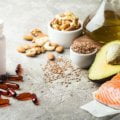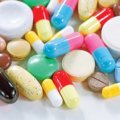Fraudulent mislabelling of seafood is rampant in South Korea, in which one-0.33 samples in a complete DNA observation have been observed to be mis-sold. More than 1/2 of all sushi samples (53.9%) proved to be wrongly labeled, as did over one-third of fresh fish (38.9%) and sashimi (33.6%) samples, in step with a file posted this week by using the Environmental Justice Foundation (EJF).
Not an unmarried sample of Chinese white shrimp—also known as fleshy prawn—was the proper species, even as nearly a third (27.8%) of all minke whale samples had been, in truth, either dolphin, whose meat incorporates dangerously high mercury levels, or finless porpoise, a prone species protected by Korean law.
The researchers took samples ordinarily inside the capital, Seoul, where mislabelling became highest in eating places ,fish markets, and online seafood purchases. But the findings need not be seen as endemic to Seoul by myself, stated campaigner Hanmin Kim, who served as the main investigator at the look-at.
“Much of the seafood bought in Korea comes from Japan or China, and in a few cases, there have been species that we couldn’t pick out by DNA, so the quantity of [fraudulent] examples could simply be better,” said Kim. “In the provinces, many supermarkets and huge superstores are less regulated, which merits extra interest.”
The findings are probably to put in addition strain on South Korea – which has one of the world’s highest prices of seafood intake in step per capita – to dramatically enhance its voluntary seafood traceability device, which campaigners have described as “woeful and pitiful.”
“These findings are stunning and talk to the Korean authorities’ failure to take this seriously. The Korean seafood traceability machine has been in operation for 11 years; however, fewer than one-5th of all operators signed as much like it,” said EJF’s director, Steve Trent.
“If you’ve got a product like fleshy prawn, wherein every single sample is mislabelled, how do you already know that product hasn’t been fished without slave crews? How do wherein it turned into fish, how do you recognize if it’s long past through the vital sanitary tests?”
Seafood fraud impacts customers’ fitness and their wallets and affects the marine surroundings, as mislabelled seafood regularly comes from unlawful, unreported, and unregulated fishing. Swordfish mislabelled as bluefin tuna may be sold for four to five instances of the price. At the same time, uncertainty over the beginning and identity of seafood merchandise raises concerns over meal protection and hygiene, stated Trent.
The document discovered that more than a 3rd (a hundred and five out of 302) of all the genetically analyzed seafood samples were mislabelled. The highest charges of mislabelling blanketed Japanese eel (67.7%), mottled skate (53.3%), and commonplace octopus (52.9%).
In recent years, memories of “seafood fraud” have increasingly made headlines in South Korea. Fears over imported products from China and Japanese seafood struck by post-Fukushima radiation have extended client attention to the issue. But the authorities have no longer aligned their meal safety programs as a consequence, says Kim.
“The authorities’ traceability gadget for agricultural meat like cows and pigs has nearly 100 coverage. However, seafood traceability doesn’t even attain 20%: the government makes excuses that there are more species at sea, so traceability is more difficult,” stated Kim.
“Just last year, there was a huge scandal over halibut and mercury poisoning, and this year, the authorities are launching a pilot project to make species obligatory on the traceability gadget. But it’s not enough, and every person is aware of it. The government has to expose some will and increase the traceability coverage.”
For the study, EJF took 318 samples from 12 seafood businesses from January to December 2018. Most of the samples (45%) were bought in restaurants; nearly a third (27%) came from important fish markets, and one-tenth (9.9%) were offered from superstores.
Almost all samples have been accrued in Seoul, where half of countrywide seafood consumption is concentrated. Still, samples of a minke whale—generally consumed in other provinces—were taken instead in Ulsan, Busan, and Pohang. A common of 25 samples has been taken for each seafood group.
The recognition becomes on extensively available groups formerly recognized as susceptible to mislabelling via governmental government or media reports, in addition to seafood that was feasible to discover with DNA checking out. All checking out was accomplished with the aid of the Korea Institute of Ocean Science and Technology, which can perform hit testing on 302 of the 318 (95%) samples.












